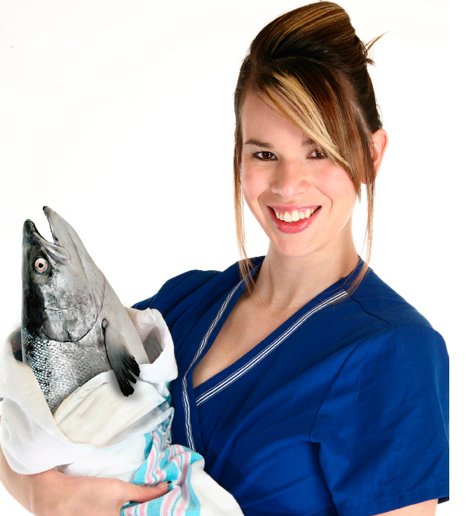
With research apparently way ahead of the consumer curve, I’d say it’s time we stopped swallowing the convenient lie about fish suffering.
A few months back, I stopped by a conservation area on the way home from the country. There amongst the picnicking and the scampering of small children was a man fishing with his young son.
He had a little fish on the end of his line pierced through the palate by his hook. He proceeded to cast again, sending the poor creature – still very much bucking and wriggling – soaring out over the waters and back into the deep.
Again he slowly reeled it in and again he cast. That was when I stopped looking. It was disturbing, but then I chided myself for acting like some kind of Bambi vegetarian I’m a big fan of pan-fried whitefish.
In the song Something In The Way, Kurt Cobain made it plain that “it’s okay to eat fish cuz they don’t have any feelings.”
I guess that group of boys I witnessed smelt fishing beside the Rouge some time ago, throwing the unwanted but still living shad into their beach fire, had been given the same information. Unfortunately, somebody neglected to inform the fish. They were writhing and flipping, doing a great impression of intense agony as they roasted alive.
Recent scientific studies suggest that the fish weren’t just acting. They do indeed experience suffering comparable to that of humans.
Researchers have methods for ascertaining this. They inject the most sensitive parts of fish – their lips – with bee venom, causing them to exhibit signs of intense pain. When they administer an analgesic, the pain behaviour ceases.
Scientist Victoria Braithwaite caused quite a stir a few years ago by showing that fish have specialized pain receptors just like we do. Her new book, Do Fish Feel Pain?, suggests that we extend to fish the same kind of compassionate considerations we give birds and mammals whose flesh we consume for protein.
Even if it’s just the compassion of a quick death.
“We have to take far fewer fish out of the system at a time,” she tells me by phone from her office at Penn State University. “And in dealing with those fewer fish, we can handle them more quickly. We can use percussive stunning – a very quick blow to the head – or electrical stunning and then cut the gills so that they very quickly bleed out as soon as possible after capture.”
Noted Princeton bioethicist Peter Singer agrees. “I think we should give their pain and suffering as much weight as we would give a similar amount of suffering in a human being,” he tells me. “There are methods we can employ without enormous cost to ourselves.”
While health food stores and some markets go to great lengths to assure customers that the wild fin fish they stock is sustainably harvested, there’s no seal of approval for the ethical treatment of fish. Nor, I’m told, are there many customer requests for such information.
And what of anglers?
“From the work we’ve done,” says Braithwaite, “I don’t think that fishing with a live bait fish on the end of a hook is an ethical process. But what I’m curious about is this: have anglers thought about alternatives? Could you actually kill the bait before you put it on the end of the hook, and would it be as effective? I don’t know the answer to that.”
The Swiss government has taken its own direction last year, live bait fishing and barbed hooks were banned. Anglers are now required to take a course in humane methods.
Time to take the bait and add “ethical treatment” to those sustainable labels.
news@nowtoronto.com












